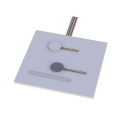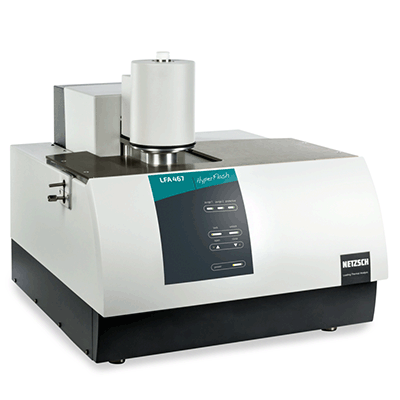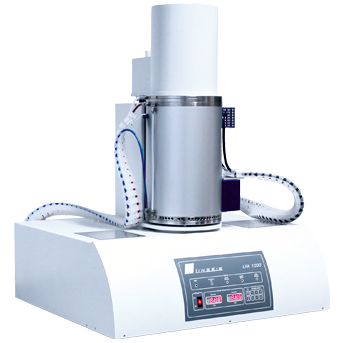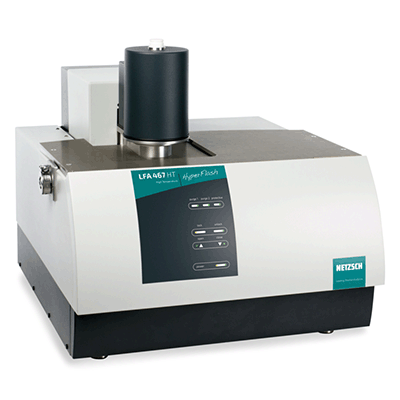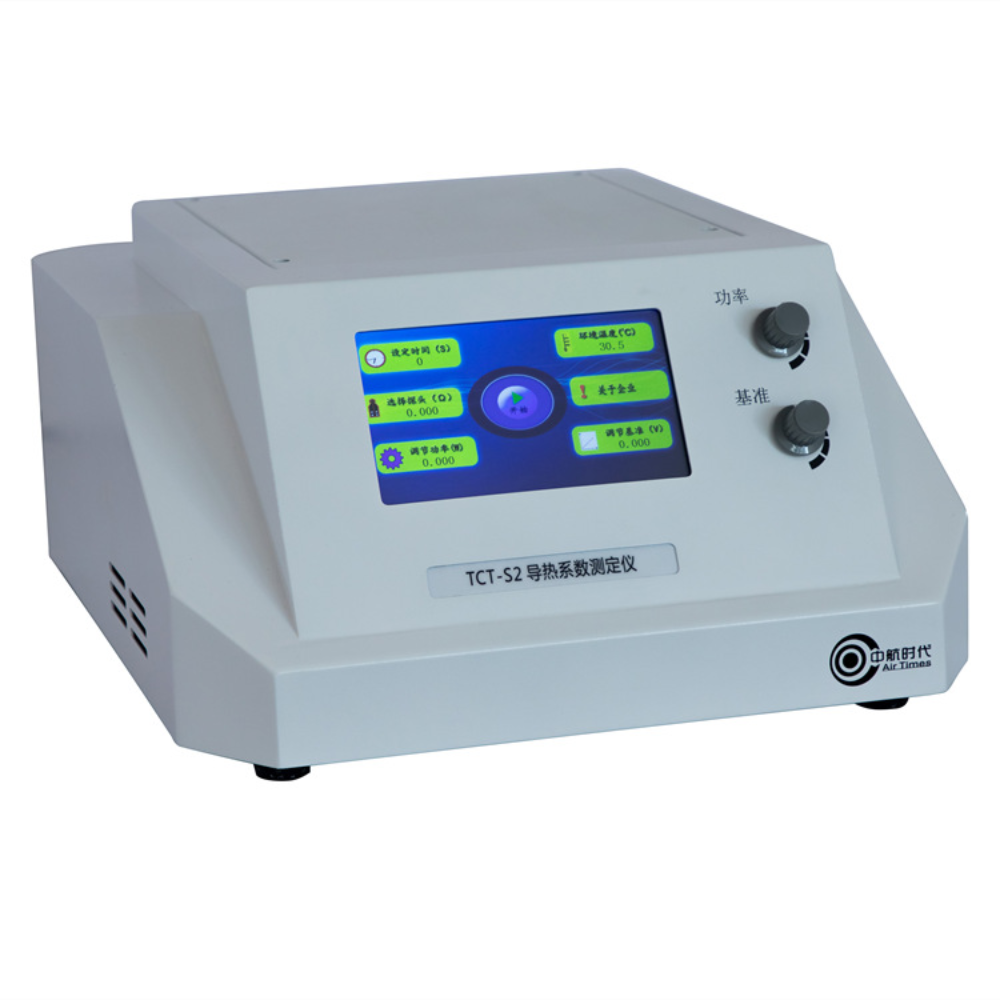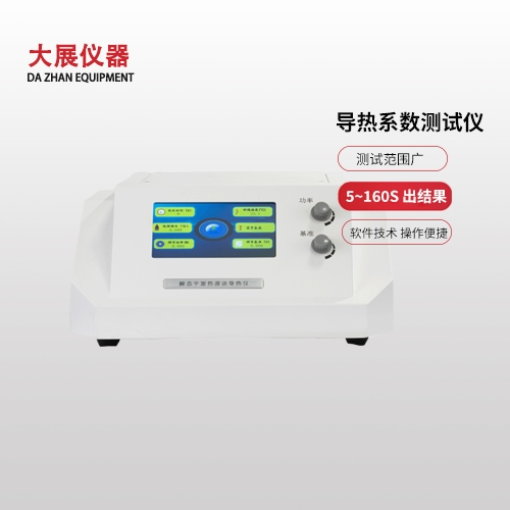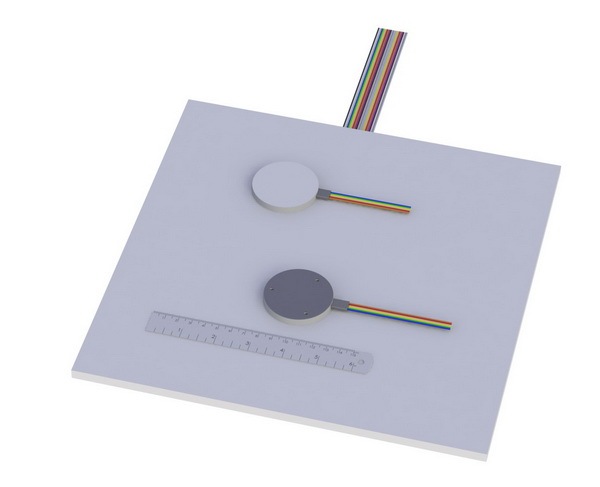
土壤热流密度很难进行准确测量,相应的土壤热流计板也很难进行校准。本文根据温度梯度和单独的导热系数测量对所研究的参考热流进行了计算。导热系数测量采用了瞬态探针法,当温度梯度测量精度优于1%时,此种方法的导热系数测量误差约为2%,这个结果是本研究工作的测试依据。将5种商品化的热流计板与这个参考热流相比较,试验证明这些热流计板具有明显的误差。1mm厚度的TNO PU 43T热流传感器具有最高的准确性,平均相对误差为4%。一种有前途的新型技术为在线校准技术,HUKSEFLUKS公司的HFP-01-SC圆片热流传感器采用了此种技术,试验证明这种传感器的误差为5%,在现场使用有很突出的优势。测试MIDDLETON CN3和TNO WS 31S热流传感器的相对误差达到近20%,而套环型热流计HUKSEFLUKS SH1则给出了更差的结果,这主要是由于它测试的是温度梯度而不是热流密度。这款热流计在进行了沙子导热系数修正后依然误差很大。对于所有被检的热流传感器,都是通过处于具有蒸发现象的瞬态条件下来获得相应的结论。
常用的Philip修正因子被证明并不十分精确,仅有一半本文所进行的试验中这种方法可以降低测量的相对误差,而其它时候反而会使误差更大。然而,这种修正做为一种工具在土壤热流传感器的设计中还是具有一定作用,并在修正幅度和测量误差之间存在一个正的相关性。
方案详情

AGRICULTURALANDFORESTMETEOROLOGYAgricultural and Forest Meteorology 92 (1998) 1-8 W.K.P. van Loon et al./Agricultural and Forest Meteorology 92 (1998) 1-82 Calibration of soil heat flux sensorsW.K.P. van Loon,, H.M.H. Bastings, E.J. Moors Department of Environmental, Agricultural and System Engineering, Wageningen Agricultural University, Bomenweg 4, 6703 HD Wageningen, Netherlands DLO Winand Staring Centre, P.O. Box 125, 6700 AC Wageningen, Netherlands Received 2 October 1997; received in revised form 15 May 1998; accepted 22 May 1998 Abstract Soil heat flux is difficult to measure accurately and soil heat flux plates are difficult to calibrate. In this research the referenceheat flux was calculated from the temperature gradient and independent thermal conductivity measurements. Referenceconductivities, as measured by the non-steady state probe method, have an error of about 2%, while the temperature gradientwas measured to an accuracy better than 1%. This results in very reliable reference measurements. Compared with thisreference, commercially available heat flux plates have significant inaccuracies. The 1 mm thin TNO PU 43 T sensor was themost accurate with an average relative error of only 4%. A promising new technique is the in situ self calibration, as performedby the Huksefluks HFP-01-SC disc sensor. With self calibration this sensor achieves an accuracy of 5% and confers severaladvantages for field use. The MIDDLETON CN3 and TNO WS 31S sensors had relative errors of about 20%. The ring shapedsensor Huksefluks SH1 gave relatively poor results, because it measured, in fact, the temperature gradient instead of the heatflux. The results of this sensor remained poor after correcting for the thermal conductivity of the sand. For all sensors the sameconclusions hold for non-steady state conditions with evaporation. The often used Philip (1961) correction factor is shown to be not very accurate: in only half of our experiments its usedecreased the relative measuring error; and in some cases it made it worse. However, the correction remains useful as a tool fordesigning soil heat flux sensors; also a positive relation exists between the magnitude of the correction and the inaccuracy ofthe measurement. C 1998 Published by Elsevier Science B.V. All rights reserved. Keywords: Heat flux; Soil; Sensors; Thermal conductivity; Calibration; Measuring errors 1. Introduction Soil temperature is one of the most importantgrowth factors of plants (Kirkham and Powers,1972). Seeds will not germinate, until the soil tem-perature reaches a certain critical value and after that anormal growth rate also needs a certain soil tempera- ( *Corresponding a uthor. Tel.: +31-317482980; f ax: +31-317484819; e-mail: wilko.vanloon@user.aenf.wau.nl ) ture. Chemical reactions, that release nutrients to theplant, increase with soil temperature. The major causeof the variation of the temperature at the soil surface isthe changing intensity of the solar radiation (van Wijk,1966). A considerable fraction of this radiationreaches the soil surface if there is no dense vegetationcovering the soil. The heat then flows through the soilmainly by conduction (the transfer of thermal energyon a molecular scale). Thus soil heat flux is animportant parameter in models for energy balance, ( 0168-1923/98/$19.00 C 1 998 Published by Elsevier Science B . V. All rights reserved.PII S0168-1923(98)00090-2 ) between air and soil, not only for plant growth models,but also for meteorological models. The main practical use of measurements of soil heatflux is in meteorological stations that have the purposeto establish the energy balance at the surface. Thisenergy balance is a part of soil vegetation atmospheretransfer models (SVATs), part of climatological stu-dies or in general part of a far more accurate calcula-tion of evaporation (Buchan, 1991; Franks et al.,1997). The thermal conductivity of the soil and the tem-perature gradient determine the heat flux in the soil(Fourier’s Law). The standard design of a soil heat fluxsensor follows from this relationship. A thermopileembedded in a disc shaped resin measures the tem-perature gradient; the thermal conductivity of thesensor is usually known (it is mainly a materialproperty of the insulating resin). This measuringset-up causes two kinds of measuring errors: 1. Because the thermal conductivity of the sensordiffers from that of the soil, the soil heat flux byconduction is disturbed (Philip, 1961). This isknown as the deflection error. 2. The plate itself impedes both liquid and vapourwater flow, including the coupled (convective) heattransport (e.g., Buchan, 1991). Soil heat flux plates are difficult to calibrate (Wood-ward and Sheehy, 1983). In dealing with the deflectionerror Watts et al. (1990) suggest a calibration for eachsensor in two media with well-known thermal con-ductivities. A disadvantage is the extra measurementof the temperature gradient not only during calibra-tion, but also in any (field) experiment. In our research five commercially available sensorsare tested under static and dynamic conditions in awell-controlled calibration set-up. The five sensorsinclude: 1. Thick TNO disc, 2. Thin TNO disc, 3.Middleton plate, 4. Huksefluks disc and 5. Huksefluksring. The fifth sensor cannot impede liquid and vapourflow, because it forms only a thin ring. All measuredsoil heat fluxes are compared with the in situ deter-mined thermal conductivity (van Loon et al., 1989)and temperature gradient of the soil. The measuringerrors of the four discs are evaluated and comparedwith the correction of Philip (1961) and qualitativelycompared with the method of Watts et al. (1990). 2. Theory Fourier’s Law expresses the heat flux by conductiono(Wm-2 with 入 the thermal conductivity (Wm-K-) of thesoil and dT/dx the temperature gradient in the x(vertical) direction. It is the limit of the change intemperature ▲T over a small distance ▲x. The soil heat flux is assumed to be one dimensionalin the vertical direction. Under steady state conditionswe also assume that no convection or evaporation andcondensation take place. Even under these idealisedconditions two measuring errors can be distinguishedaccording to van der Graaf (1990): the so-called one-dimensional distortion and the three dimensional dis-tortion. Philip (1961) described and solved analytically thedeflection error for flat soil heat flux sensors. Becausethe soil heat flux sensor has a thermal conductivitywhich is usually smaller than that of the soil (Asen
确定


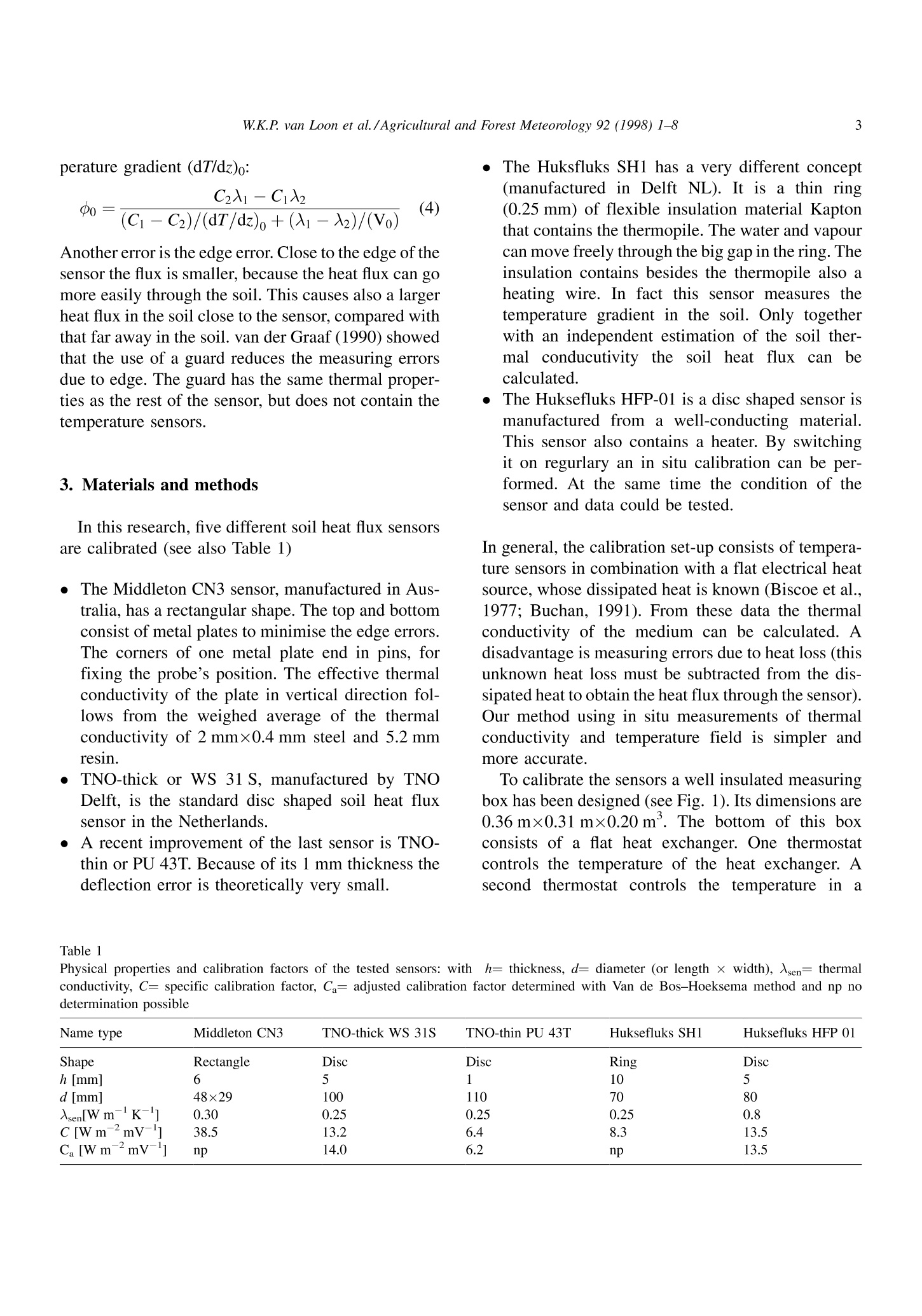
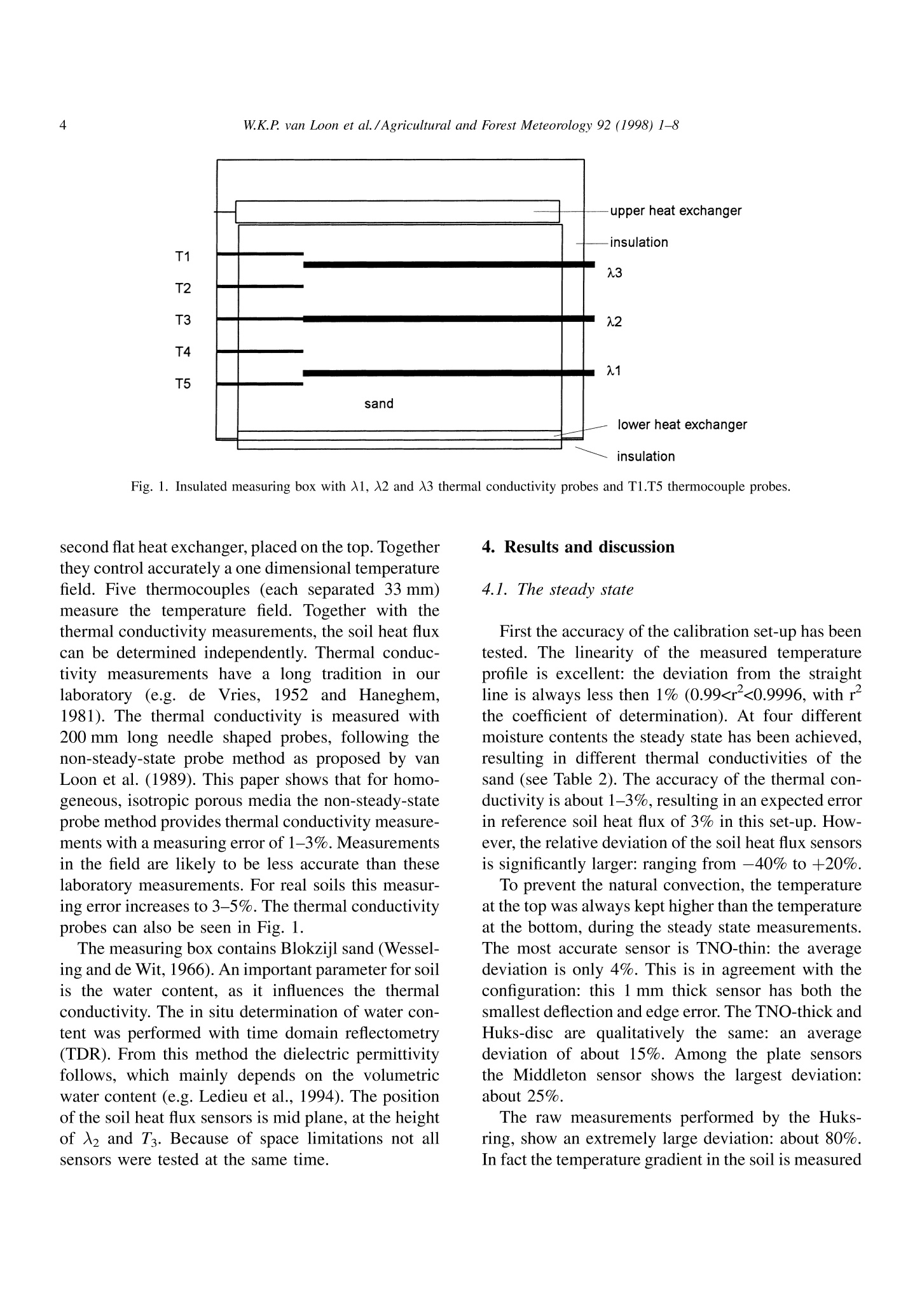
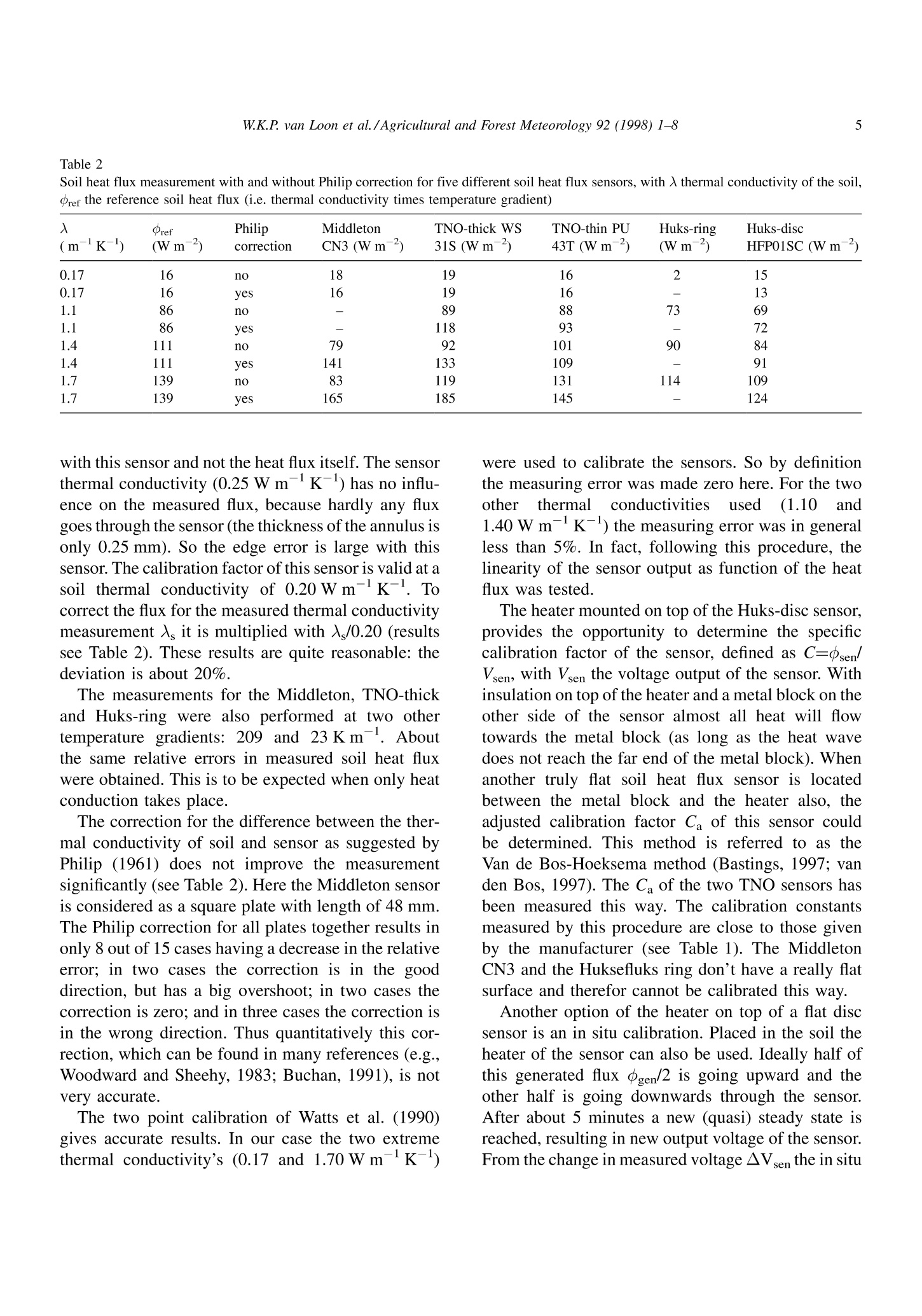
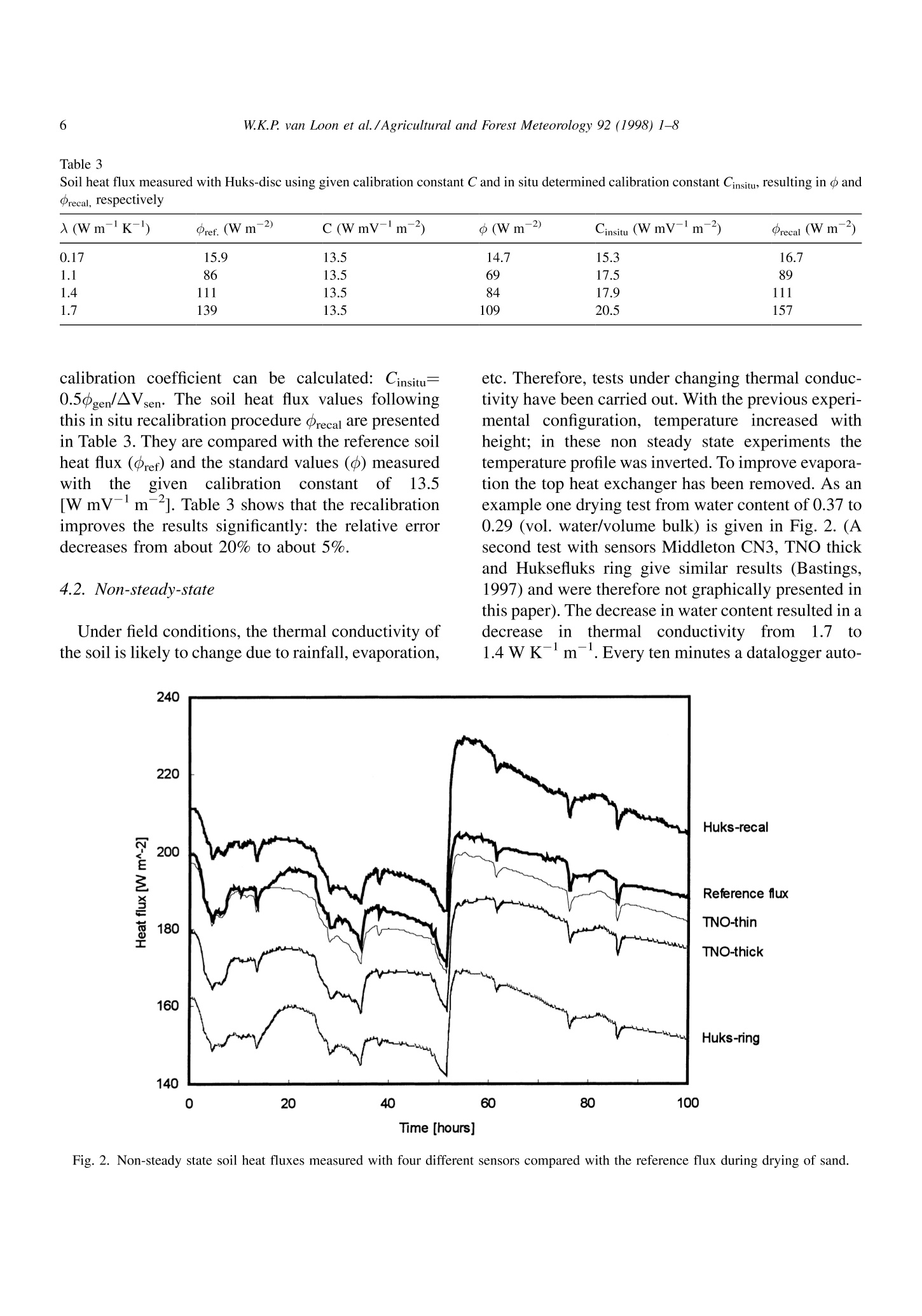
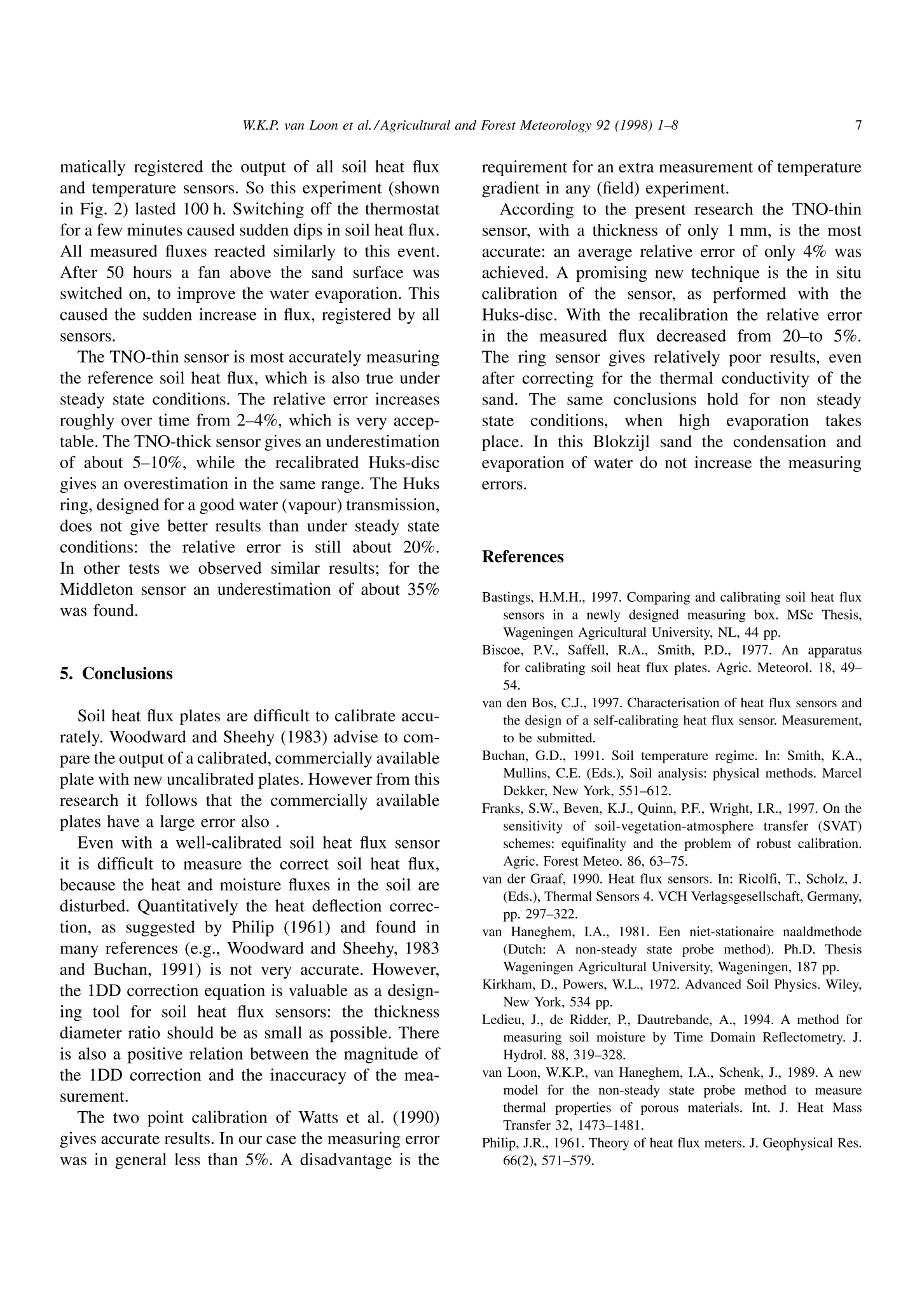

还剩6页未读,是否继续阅读?
上海依阳实业有限公司为您提供《土壤热流传感器的校准》,该方案主要用于其他中检测,参考标准--,《土壤热流传感器的校准》用到的仪器有高灵敏度热阻式热流计
推荐专场
相关方案
更多
该厂商其他方案
更多










